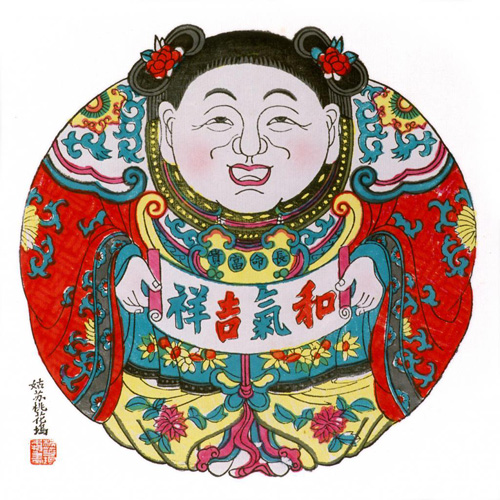Taohuawu New Year’s paintings remain still vital in modern times

New Year's woodblock paintings depict ancient Chinese people's ideal of a "poetic dwelling" and pursuit of happiness, prosperity and reunions.
Taohuawu New Year woodblock paintings originated in Suzhou, Jiangsu Province. It is impossible to verify the specific time they were created because there are few documents about their origins and people did not have any effective means to preserve old paintings.
On the basis of the remaining paintings, Taohuawu New Year’s woodblock paintings may have originated in the Ming Dynasty (1368-1644) and flourished during the late Ming and early Qing (1616-1911) dynasties.
At that time, there were approximately 40 or 50 workshops of New Year’s woodblock paintings along Feng Bridge, Shantang Street, Tiger Hill, the Taohuawu Area and The Pagoda of Bao’en Temple in Suzhou. The annual production of Taohuawu New Year woodblock paintings reached more than a million pieces at one point, and these paintings were sold out across the country. Some of them even went abroad with merchant ships to Southeast Asia, and their artistic style exerted a great influence on Japanese Ukiyo-e paintings.
For 400 years, Chinese used Taohuawu New Year’s woodblock paintings to decorate their homes, adding some holiday spirit and expressing their yearning for a good life. The subjects of Taohuawu New Year’s woodblock paintings are rich in content, such as figures, landscapes, flowers, birds, local operas and folklore.
In order to adapt to people’s different lifestyles and living conditions, Taohuawu New Year’s woodblock paintings have various shapes and sizes. But no matter what size the painting is, it needs to go through three major processes: drawing a rough sketch, engraving woodblocks and overprinting.
Because the overprinting process should follow the principle “one color, one woodblock,” one Taohuawu New Year’s woodblock paintings usually requires five or six color woodblocks, and most paintings need more. In a piece with 21 colors, six to seven craftsmen will work for one year to make 21 color woodblocks. These craftsmen must have patience and endurance.
Because of the complicated construction process involved, Taohuawu New Year’s woodblock paintings cannot be reproduced rapidly on a large scale. So they have to rely on handmade methods and traditional techniques for production. Cultivating its legacy has become the number one task for protecting this technique. Many art academies in Suzhou have broken with the tradition of having a master and apprentice, instead the teaching method combines traditions with modern college teaching patterns and technological means, which preserves the legacy of Taohuawu New Year’s woodblock paintings in modern times.
Wu Nan and Wang Guanglu are reporters at the Chinese Social Sciences Today.
